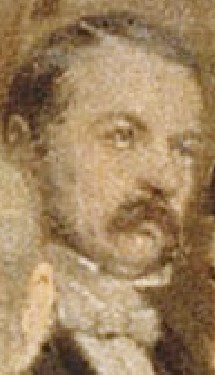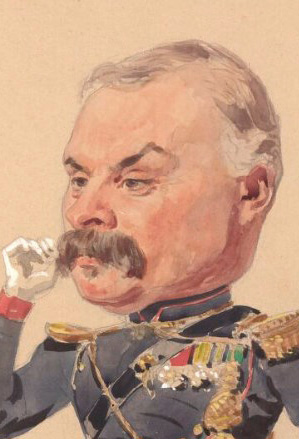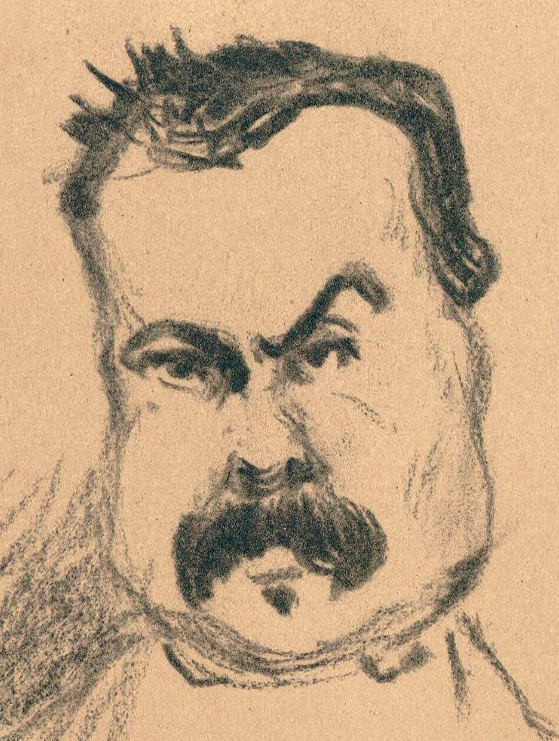Octave Penguilly L’Haridon (1811-1870), painter, conservator Pierrefonds
1st image: Soirée; 2nd: by Nadar (1855); 3rd: caricature by Giraud drawn January 29, 1858 at de Nieuwerkerke's soirée; 4th: caricature by Nadar (1850s).
Besides Giraud's caricature from 1858, it was the noticeable difference between the eyes, and the fierce mustache, that pointed me to Octave Penguilly L'Haridon, conservator of the artillery museum in Paris and creator of Napoleon III cabinet of arms at the castle of Pierrefonds. In addition to conservator, Penguilly also was colonel, and painter.

He studied at the Ecole Polytechnique. His father, being an army logistics expert, destined him for a military career.
During his military education he was allowed to study painting, and made ink-drawings on a variety of subjects, from the royal court to courtisanes, and even a dystopic perspective of Paris in the year 3000 that was considered 'weird.'
His Breton family background inspired many of his later landscape works, such as Menhirs de la plaine de Carnac and Les Petites Mouettes (1858).
At the 1845 and 1846 Salons he won 2nd and 3rd prices, and Baudelaire, deviating from his usual grumpy reviews, pointed out the workmanship and colors of Arlequin and Polichinelle.
Princess Mathilde held him in high respect and several of his works were commissioned by her and by the emperor. His Combat des Trente (1857, Musee Quimper), became a praised historic painting about the bloody battle between thirty Bretons and thirty English knights from the fourteenth century.
At Mathilde’s soirées, he met and befriended de Nieuwerkerke16, ‘les Girauds’ and ‘les Viollets.’ His network of contacts at the imperial level supported his permanent attachment to the École Polytechnique in 1852, and his replacement of de Saulcy69 as conservator of the artillery museum in 1854.
Eugène Giraud11 drew his caricature after a vendredi-soirée in January 1858. Penguilly further became a regular invitee at the annual imperial parties at Compiègne.
His military strictness came to good use in his detailed and well-organized museum inventory catalogue of over 1,000 pages. He understood the needs of the visitors and was one of the first to write notes with details and location of the collection items.
In his memoires, fellow-conservator Viel-Castel43 writes in 1861:
“[Mathilde] is ecstatic over the works of the Giraud family and in front of the drawings and paintings of the brave commander Penguilly L’Heridon who draws like V. Adam [Victor Adam] and paints like - fortunately, no one has ever painted.”
Baudelaire praised the biblical, orientalist, and fantasy style of Penguilly’s L’arrivée des mages à Bethléem (1864, Musee d’Orsay), and the intensity of the colors of his paintings of the coast of Bretagne. Some consider Penguilly’s work related to the Barbizon tradition.
Penguilly is one of many people in Soirée au Louvre that perished during the French-Prussian war in 1870.
Note: Penguilly’s name is not mentioned in a recently emerged press article from 1855. Given the ambiguities in this article and the lack of evidence for other candidates, Penguilly remains the most realistic candidate.



